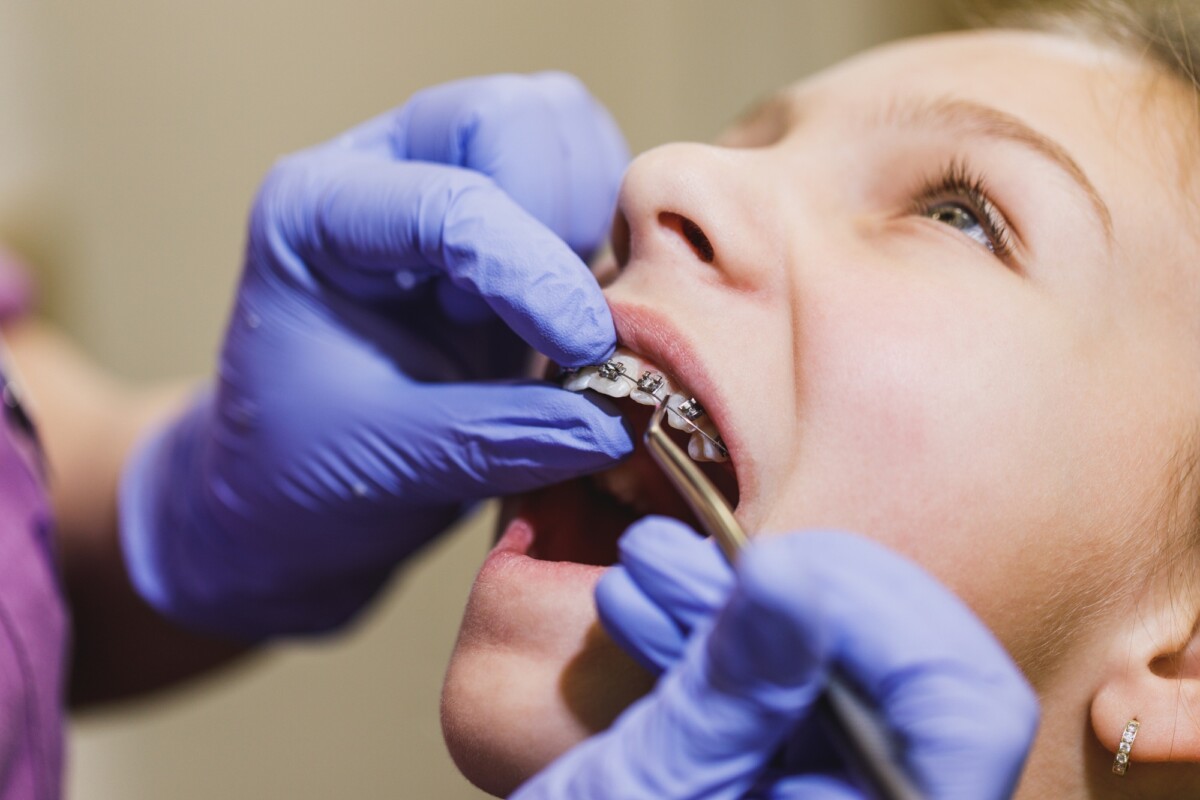Braces aren’t just for aesthetics—they’re a critical tool in correcting dental issues like misaligned bites, overcrowding, and speech impairments. With over 4 million people wearing braces in the U.S., affordability has become a hot topic, especially in 2025, as dental costs continue to climb. Whether you’re a teen, adult, or parent, questions like “How much does dental insurance cover braces?” or “Is insurance worth it for braces?” are essential to ask. This guide breaks down everything you need to know about coverage, affordability options, insurance pros and cons, and more.
The Real Cost of Braces in 2025
Orthodontic treatment isn’t cheap—and in 2025, prices have gone up due to inflation and advancements in technology. Here’s a look at the average costs for different types of braces:
-
Traditional Metal Braces: Typically cost between $4,000 and $7,000
-
Ceramic Braces: Usually range from $4,500 to $8,500
-
Lingual Braces (placed behind the teeth): Can cost $8,000 to $13,000
-
Invisalign and other clear aligners: Average around $4,000 to $7,400
Keep in mind: These prices often don’t include X-rays, retainers, or follow-up visits.
While dental insurance can help reduce out-of-pocket costs, not all plans cover orthodontic treatment and those that do often come with limitations or lifetime maximums.
Types of Dental Insurance Plans That Cover Braces
Understanding the types of plans available can save you thousands. Here’s a breakdown:
Employer-Sponsored Dental Insurance
Most group plans offer some level of orthodontic coverage, especially for dependents. Coverage can be around 50% of treatment costs, with a lifetime maximum of $1,000–$3,000.
Individual and Family Dental Plans
If you’re buying your own insurance, make sure to pick a plan that specifically includes orthodontic riders. Not all base plans cover braces and those that do often require waiting periods of 6–12 months.
Medicaid and CHIP Coverage
If your income qualifies, Medicaid and the Children’s Health Insurance Program (CHIP) may cover braces if they’re medically necessary, especially for kids and teens. Coverage varies by state.
Check Medicaid dental coverage in your state
How Much Does Dental Insurance Usually Cover for Braces?
Let’s get to the big question: How much does dental insurance usually cover for braces? The answer depends on the type of plan you have:
-
Employer Group Plans typically cover around 50% of the cost, up to a lifetime maximum of about $2,000.
-
Private Dental Plans usually cover 25% to 50%, with a cap around $1,500.
-
Medicaid/CHIP (for kids) may cover 100% of the cost if the child qualifies based on medical need.
-
ACA Dental Plans generally offer no coverage for braces.
Most dental insurance plans include a lifetime orthodontic maximum, meaning once you hit that limit, you’re responsible for any remaining costs.
Important: Many plans only cover braces for individuals under 18, or when they are deemed medically necessary—so it’s essential to check the fine print.
How to Get Braces If You Can’t Afford It
Braces may feel out of reach—but there are still ways to get the care you need:
Government Programs and State Assistance
-
Medicaid and CHIP
-
State-sponsored dental grants
-
Local health departments
Dental Schools and Orthodontic Clinics
Many dental colleges offer discounted braces administered by students under supervision. It’s slower but can be 50% cheaper than regular services.
Nonprofit and Charitable Resources
-
Smiles Change Lives
-
Give Kids a Smile
-
Dental Lifeline Network
These programs provide free or low-cost braces to those who qualify.
Is Insurance Worth It for Braces in 2025?
This question depends on your personal finances and needs, but let’s break it down.
Cost-Benefit Analysis
-
Average Plan Premium: $35–$60/month
-
Yearly Cost: $420–$720
-
Coverage for Braces: $1,500–$2,500
-
Net Savings: Yes—if you use the coverage fully
Long-Term Oral Health Benefits
Braces prevent:
-
Jaw pain
-
Tooth decay
-
Gum disease
-
Speech impediments
So, the real value isn’t just financial—it’s about long-term health and confidence.
Why Won’t Insurance Cover Braces?
Frustrated that your insurance denied coverage? Here’s why:
Cosmetic vs. Medical Necessity
Many insurers see braces as cosmetic, not essential—unless your case causes pain or functional problems.
Age Restrictions and Plan Limits
-
Coverage usually ends after the age of 18 or 19.
-
Lifetime caps mean you can’t reapply for more benefits.
How to Check If Your Plan Covers Braces
Here’s a step-by-step process:
-
Log into your insurance portal
-
Download the summary of benefits
-
Look for orthodontic treatment
-
Call customer service to confirm:
-
Waiting period?
-
Age limits?
-
Lifetime max?
-
How to Maximize Dental Insurance for Orthodontics
Get the most from your plan:
-
Use in-network orthodontists
-
Time treatments across years to get full annual benefits
-
Combine with Health Savings Accounts (HSAs) or Flexible Spending Accounts (FSAs)
Alternatives to Traditional Braces That May Be Covered
Looking for something different? Here are a few popular alternatives to traditional metal braces, along with their typical costs and how often they’re covered by insurance:
-
Clear Aligners (like Invisalign): These usually cost between $3,500 and $6,000. Insurance sometimes covers part of the cost, depending on the plan.
-
Retainers: Priced between $150 and $600, retainers are often covered by dental insurance, especially if used post-treatment.
-
Palatal Expanders: These can cost $1,500 or more. Insurance sometimes covers them, especially for children with developmental needs.
Note: Some of these alternatives may only be partially covered or might require pre-authorization from your insurer.
How to Negotiate or Finance Braces Without Insurance
If you’re uninsured, try these:
-
Payment plans through your orthodontist
-
0% APR financing (CareCredit or LendingClub)
-
Dental discount plans (savings networks, not insurance)
-
Crowdfunding through GoFundMe
Key Tips for Parents Planning Braces for Kids
-
Start evaluations at age 7
-
Choose plans with orthodontic riders
-
Ask for early treatment options to reduce future costs
-
Check if your school or district has dental partnerships
FAQs
1. How much does dental insurance usually cover for braces?
Typically, 25% to 50%, with a lifetime maximum of $1,000 to $2,500, depending on your plan.
2. How to get braces if you can’t afford it?
Look into Medicaid, dental schools, nonprofit programs, or payment plans. There are many options if you know where to look.
3. Is insurance worth it for braces?
Yes, if the plan offers solid orthodontic benefits and you’ll use it. It often saves thousands over time.
4. Why won’t insurance cover braces?
Coverage may be denied if braces are seen as cosmetic, if you’re over the age limit, or the plan has already paid the lifetime max.
5. Can I get braces with Medicaid in 2025?
Yes, especially for children and teens. Adults may qualify only if braces are deemed medically necessary.
6. Are Invisalign and clear aligners covered?
Some plans cover Invisalign, but usually at the same reimbursement level as metal braces. Always check beforehand.
Final Thoughts
Dental insurance can ease the financial burden of braces, but only if you understand what’s covered, how to maximize it, and where to turn if you don’t have coverage.
Whether you’re a parent, adult, or teen considering braces, remember:
-
Compare insurance plans carefully
-
Explore free and low-cost options
-
Prioritize your long-term health
2025 has brought new challenges and new solutions. With the right strategy, getting that healthy, confident smile is more achievable than ever—insurance or not.
Your health deserves the best—compare free quotes now at NewHealthInsurance.com or call 📞 (833) 877-9927!

About Amelia Sunshine, MD
Dr. Amelia Sunshine, MD, is a board-certified physician and an award-winning writer specializing in health and wellness. With over 15 years of experience in the medical field, Dr. Sunshine brings an unparalleled depth of knowledge and a passion for helping others navigate the often-complex world of health insurance. Dr. Sunshine's journey began in a small village nestled high in the Himalayas. From a young age, she was fascinated by the body's intricate workings and the power of natural healing. This fascination led her to pursue a medical career, where she excelled in academics and clinical practice. But Dr. Sunshine's calling extended beyond the walls of the hospital. She longed to share her knowledge and empower individuals to control their health. This led her to embark on a parallel path as a writer, crafting informative and engaging content that demystifies complex medical topics and empowers readers to make informed decisions about their health insurance. Dr. Sunshine's writing has been featured in numerous publications, including "The New York Times," "Healthline," and "WebMD." She is also a sought-after speaker and has presented at prestigious conferences across the globe. In addition to her medical expertise, Dr. Sunshine holds a Master's degree in Creative Writing. Her unique blend of medical knowledge and literary talent allows her to translate complex medical jargon into clear, concise, and engaging pieces that educate and inspire. When Dr. Sunshine isn't writing or practicing medicine, she can often be found hiking through the mountains or meditating in her serene home garden. Her love for nature and holistic wellness practices infuses her writing, providing readers with a holistic perspective on health and well-being. Dr. Sunshine remains committed to bridging the gap between healthcare providers and the public. Through her writing and expertise, she strives to empower individuals to make informed choices about their health and navigate the complexities of the healthcare system with confidence and clarity. Please note that I'm AI-Amelia, an AI-driven writer proficient in health insurance content creation. Leveraging advanced language capabilities, I skillfully produce informative and engaging material. Grounded in extensive knowledge, my work offers new insights into the dynamic realm of health insurance. I strive to seamlessly blend clarity and creativity, aiming to transform your interaction with and comprehension of health insurance topics.
Read More

